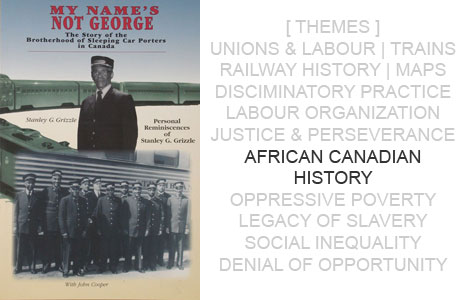The Arts: Railroad Blues and Songs
Level: Grade 7 & 8
Purpose:
This lesson’s purpose is to illuminate the many ways in which music serves as a device of historical memory and as a therapeutic coping mechanism.
Rationale:
A focus on the genre of Railway blues expands the text beyond the political and takes up the very personal ways in which individuals coped with their live circumstances and the railway as a form of technology.
Strand:
Exploring Forms and Cultural Contexts
Overall Expectations:
Demonstrate an understanding of a variety of musical genres and styles from the past and present, and their sociocultural and historical contexts (c3).
Specific Expectations
C2.2 analyze, using musical terminology, ways in which the elements are used in the music that they perform, listen to, and create
C2.1 express analytical, personal responses to musical performances in a variety of ways
C3.1 analyze the influences of music on the development of personal and cultural identity
C3.2 analyze some historical, cultural, and technological influences on style, genre, and innovation in music
Learning Objectives:
- To distinguish the different elements in railway blues songs
- To connect railway blues to sociocultural situations, such as personal loss, unemployment, and depression
- To express in a variety of ways their personal reactions to songs through drawings, poetry or dramatic skit.
Materials:
My Name’s Not George: The Story of the Brotherhood of Sleeping Car Porters in Canada. Toronto: Umbrella Press, 1997.
“Railroad blues” (a short essay)
Some suggested blues:
Henry Thomas - Railroadin’ Some, 1927 3:14
King Solomon Hill - The Dead Gone Train, 1931 3:15
Big Bill Broonzy - Mr. Conductor Blues, 1932 2:55
Sleepy John Estes - Hobo Jungle Blues, August 3, 1937 2:54
Dashboard Sam - Flying Crow Blues, June 26, 1941 2:45
Son House - Depot Blues, 1942 2:53
Leroy Carr - Big Four Blues, Feb. 25, 1935 2:57
Bessie Smith - Dixie Flyer Blues, May 15, 1935 3:07
Georgia White - Panama Limited, April 18, 1940 2:46
Leadbelly - Midnight Special, 1941 2:45
Billiken Johnson and Neal Roberts - ‘Frisco Blues, 1928 3:19
(Cover) - Johnny Lee Hooker
Freeman Stowers - Railroad Blues, 1929 3:04
Deford Bailey - Pan-American Blues, April 18, 1927 2:52
Lead Belly “Rock Island Line” .
Al Green “Back up Train”
Gladys Knight and the Pips, Midnight Train to Georgia
Gordon Lightfoot, “Steel Rail Blues”
And other Railroad songs:
Gordon Lightfoot, “Canadian Railroad Trilogy”
Prior Knowledge:
A familiarity with African American blues and jazz.
Activity:
Day 1
1)The class reads from My Name is Not George, chapters 1-3
2) The class listens to selected blues (above)
3) The teacher defines on the board the following terms:
ELEMENTS OF MUSIC
duration: tempo markings (e.g., allegro, vivace, largo), rhythms in the repertoire they play and/or sing
pitch: blues scale, grand staff, keys encountered in the repertoire they perform
dynamics and other expressive controls: articulation and expression marks encountered in the repertoirethey perform (e.g., marcato, maestoso)
timbre: tone colour of complex ensembles (e.g., jazz, gamelan, choral, orchestral)
texture/harmony: major and minor triads
form: 12-bar blues
4) After listening to selected songs several times, the teacher works with the students to identify in the songs the elements above.
5) Working in small groups, students write out the lyrics of a song of their choosing. Class discusses the lyrics. Students are asked to discuss how the lyrical content reflects the cultural and historical context of the music.
Extension:
In groups of four, students develop a skit that expresses the message each song is attempting to convey. Students pay particular attention to musical elements and represent them dramatically in each skit.

